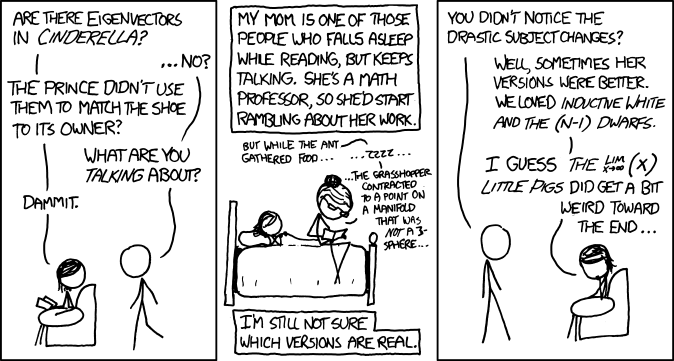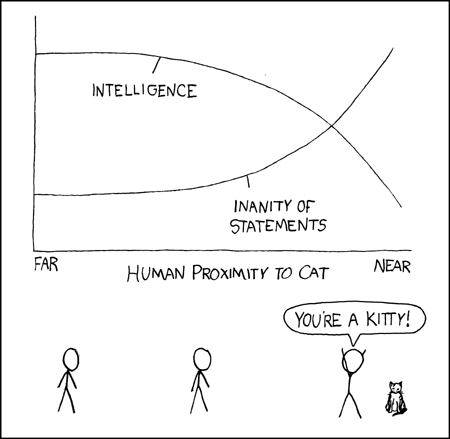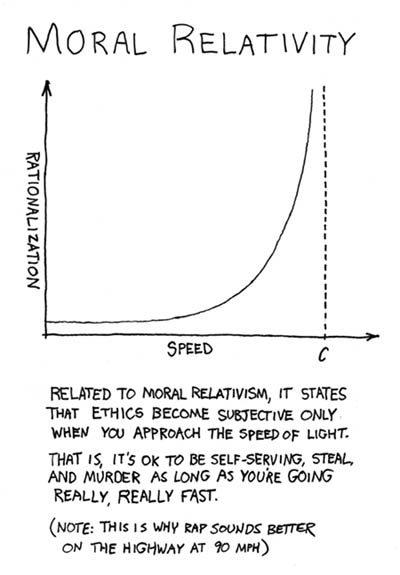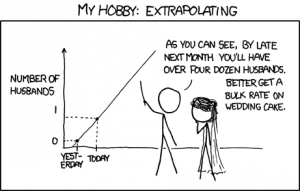Apr 13
I asked my calculus students to read this xkcd strip from http://xkcd.com/872/

Then I asked them:
a) What is $\lim_{x\rightarrow \infty} (x )$?
b) Explain what might have been weird about the $\lim_{x\rightarrow \infty} (x )$ little pigs.
Mar 23
Randall Munroe drew a lovely comic strip graphing the effects of proximity to a cat on the human intellect:

(You can view it here: http://xkcd.com/231/).
In differential calculus I asked students to describe the graphs using their knowledge of calculus. Statements about both the first and second derivative are expected.
In Intermediate Algebra here at UDM we study qualitative graphs, so I also asked my Algebra students to describe the graph. These students have to say things like the intelligence of the human is decreasing, but at an ever faster rate.
One caution with this comic: some students do not know what “inanity” means, so I use this problem on the review sheet rather than the exam.
Feb 26
Here’s a question I asked my students about limits using http://www.xkcd.com/103/:

1) Using the graph in the comic strip, find
\lim_{speed \rightarrow c} Rationalization.
2) Write one or two complete sentences explaining what the limit I just had you compute has to do with the text of the comic strip.
Jan 06
Here are a few comic strips dealing with extrapolation. Each is accompanied by a question I would ask students about the strip.
1) Explain this comic strip using knowledge from the course.

(This strip is by Randall Munroe and can be accessed at http://xkcd.com/605/)
2) Read this comic strip by Randal Munroe and answer the following questions.

(This strip can be accessed at http://xkcd.com/1007/)
a) For which span of years does the Munroe have data on the frequency of the use of the word “sustainable”?
b) Munroe made a model of this data. Does the model fit the data well?
c) Munroe used his model to predict the frequency of the word “sustainable” in 2061. What percent of words does he predict will be ”sustainable” in 2061? Is this an example of interpolation or extrapolation? Is this prediction likely to be valid?




